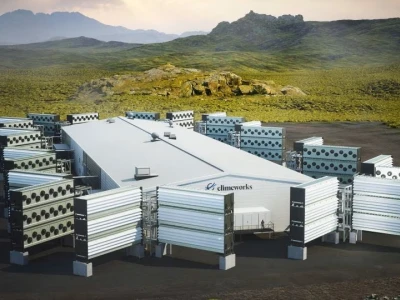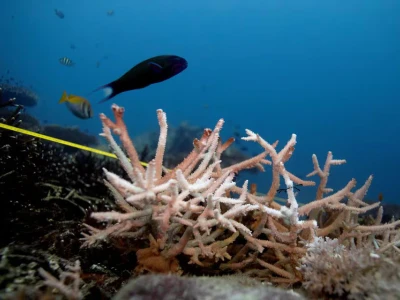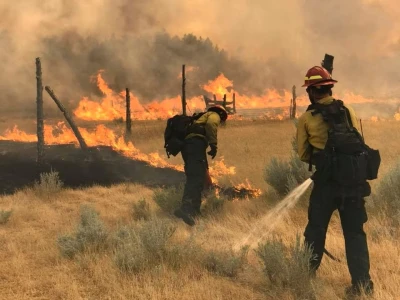
Maldives not sinking! Natural resilience shocks scientists
The resilience of islands depends completely on the well-being of marine life, including the reefs that surround islands.
By
Shahudha Mohamed
Scientists have included Maldives on the list of the first countries to 'sink' due to global warming and sea level rise. Major foreign organisations studying climate change have estimated that 80% of Maldives will be under the sea by the end of this century.
There is no doubt about the prevalence of sea level rise today. This fact is evident from extensive studies and the observable changes right before our eyes. Scientists predicted that the Maldives would sink completely due to rising sea levels, believing that there would be no way for small islands to withstand the encroaching sea and survive.
This fragile country has defied all those assumptions. Drum roll, please! The Maldives’ islands are not sinking, as scientists previously believed.
The New York Times, one of the world's most famous newspapers, published a report on the Maldives' islands last week.
Why aren't the islands sinking with the rising sea levels?
Scientists Arthur Webb and Paul Kench set out to understand the changes in low-lying islands due to the rising tide by observing the view from above. They collected aerial photographs of 27 Pacific islands since the mid-20th century and compared them with recent photographs.
The findings surprised even the scientists:
-
Every decade the sea level rose by an inch, but the islands also grew with the growing waves
-
Although there have been some changes in the shape and surrounding of the island, the size of the island has not changed much
Other scientists have gathered more information in the light of these findings. When looking at the changes that have taken place in thousands of islands so far, the same things have been noticed. Some islands have eroded and shrunk, while others have grown. However, most islands have not changed much overall.
Scientists' attention to Maldives
Maldives has always been popular among scientists due to its natural characteristics. In addition, their interest has lately increased as Maldives is on the list as one of the first countries to experience the effects of climate change.
A team of scientists arrived in the Maldives' largest province, Huvadhoo Atoll, to study the changes caused by sea level rise. The scientists were accompanied by a New York Times team who spent two weeks in Maldives. The newspaper report takes note from the findings:
-
In recent decades, erosion has reduced the land area of 42% of the islands in Huvadhoo Atoll
-
While 39% of the islands changed their shape the land proportion did not change significantly
-
The proportion of land increased in 20% of the islands; these include islands that have grown due to dredging
Scientists are now trying to find out the reasons behind the growth of some islands while the others shrank. The team of scientists of the 2010 study includes Dr Kench as well.
An example of changes is from Kandahalagala
In Kench’s research, he also uncovered some of the detailed changes that have taken place in individual islands. The New York Times report showed the shape of the uninhabited island of Kandahalagala in Gaafu Dhaalu atoll.
During the last half century, the island underwent significant changes in its shape. First the northern beaches eroded and the southern side grew. Over the next five years, the eastern end eroded somewhat. Then, the western sands grew. The sand that formed in the northwest in 2019 has now spread evenly on both sides. The chicken-egg shaped island 55 years ago now looks oval on one end and round on the other.
What happens if natural resilience gets hindered?
The scientists' findings show the perfection of natural systems and the resilience of low-lying islands. They’ve decided that low-lying islands are adapting to rising sea levels. If so, is there anything we need to do to adapt to climate change?
Although the latest results prove that Maldives is not 'sinking', the risks we face with climate change do not end there. Increased incidence of flooding and swelling tides, as well as the rising temperatures are dire situations we have to deal with even now, in the present.
-
Although the stable island core of some islands do not shrink due to the erosion on one end, when the residential areas are eroded on others, it causes serious damage to public life and people's houses and property
-
Such things are already happening in some islands of Maldives; one example was shown in the New York Times was in Himandhoo in North Ari atoll
No matter how perfect the natural systems are, we are seeing the destruction of islands due to development projects that disrupt the natural cycles. There are islands that have suddenly faced major erosion problems with the implementation of large projects such as port construction.
A similar thing happened in Himandhoo. With the construction of the port, the sand that used to flow around the island was blocked and pulled out. As a result, the western side began to erode at a surprising rate.
Therefore, it is essential to carry out environmentally friendly projects in the light of new findings and information. It is important to work with experts to find new innovative solutions without sacrificing resilience for ‘concrete’ development.
The team of scientists currently conducting research in Maldives is also hoping for such solutions. Instead of building sea walls and revetment around every island, they mention some of the steps that can be taken:
-
Introduce new building codes to reduce damage from flooding
-
Guided by science, identify areas that are likely to erode or grow in the coming years and to not develop areas that are likely to erode
The growing and moving sands around the islands of Maldives are created by sea creatures such as parrotfish that eat coral and excrete sand. Therefore, the resilience of islands depend completely on the well-being of marine life, including the reefs that surround islands.
This is essential to consider at a time when global events of coral bleaching are increasing and the risk of reef’s dying rise due to increased dredging and sand mining.
The World Bank also noted in its 'Country Environmental Analysis' on Maldives this year that development projects are causing serious damage to the reefs, and that at a time when sea levels are rising, the country's rural area survival depends on the health of the marine environment around the islands.
-
The islands are made from sand that collects atop reefs; when sea levels rise, the Maldives' land area staying above water will depend on the proportion of sand produced from the reefs
-
Despite rising sea levels, Maldives' rural areas are still inhabitable because the sand produced by the natural system of reefs makes up for the rise of water levels
-
If the reefs die, it is questionable whether the amount of sand in Maldivian rural areas will be maintained at the same level as sea level continues to rise
-
In addition to the damage caused by human activities, the threat of reef death is increasing with the extreme warming in sea temperature
Without the reef system, Maldives would have to spend 8% of the country's gross domestic product (GDP) each year to compensate for flood damage, the World Bank report said.
It is a fact that natural systems have the ability to adapt to changes caused by global warming. As ocean temperatures rise, corals are adapting to it. Just like the islands are adapting to rising sea levels.
No matter how perfect, natural systems cannot compensate for the damage caused by human actions. Both reefs and islands are most affected by our actions. The most important thing we can do to mitigate the damage caused by climate change is to protect the environment and seek protection from it.








